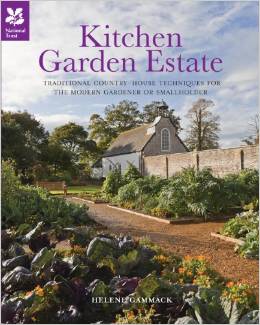 With the renewed interest in ‘growing our own”and self-sufficiency the methods of the past offer many valuable lessons. Helen Gammack’s book, Kitchen Garden Estates, traces gardening practices from ancient and medieval times to their culmination in the kitchen gardens of Britain’s great country estates. With a background in garden history, the author makes the past come alive and become an inspiration for modern gardeners.
With the renewed interest in ‘growing our own”and self-sufficiency the methods of the past offer many valuable lessons. Helen Gammack’s book, Kitchen Garden Estates, traces gardening practices from ancient and medieval times to their culmination in the kitchen gardens of Britain’s great country estates. With a background in garden history, the author makes the past come alive and become an inspiration for modern gardeners.
Whether your interest focuses on growing your own fruits, vegetables, herbs and flowers, or raising your own livestock, bees, fish, doves, and game, the book provides the historical antecedents, entertaining stories, and recipes from the past. You will lean that the favorite food of Henry VIII was the globe artichoke, sea kale was considered the aristocrat of the kitchen garden in Victorian times, and that the best place to grow mandrake is under a gallows. If you like to cook you might try the recipe for strawberry and verjuice custard tart, parmesan cheese ice cream, or the salad recipe from 1839 written in verse. On the more practical side, the author provides a chart showing good companion plants for popular vegetables, suggestions for the best breeds of chicken for modern day, and directions for siting and caring for a bee hive. The author touches on all aspects of gardening with a spark of humor and sage advice.
Although full of good suggestions for modern gardeners, the historical background and the look at life in past eras were the most delightful aspects of the book. Both the text and the illustrations gives us a rich glimpse into begone times; the story of Lord Leconfield’s attempt to grow fresh bananas, the 16th century plan for a fruit garden, and the photograph of the Duchess of Lauderdale’s dairy with its cast-iron cow legs supporting the work bench are just a few of the images from the past. With great skill, the author weaves her sources into a narrative to create a fascinating tapestry depicting the agriculture of the past times with lessons for the future.